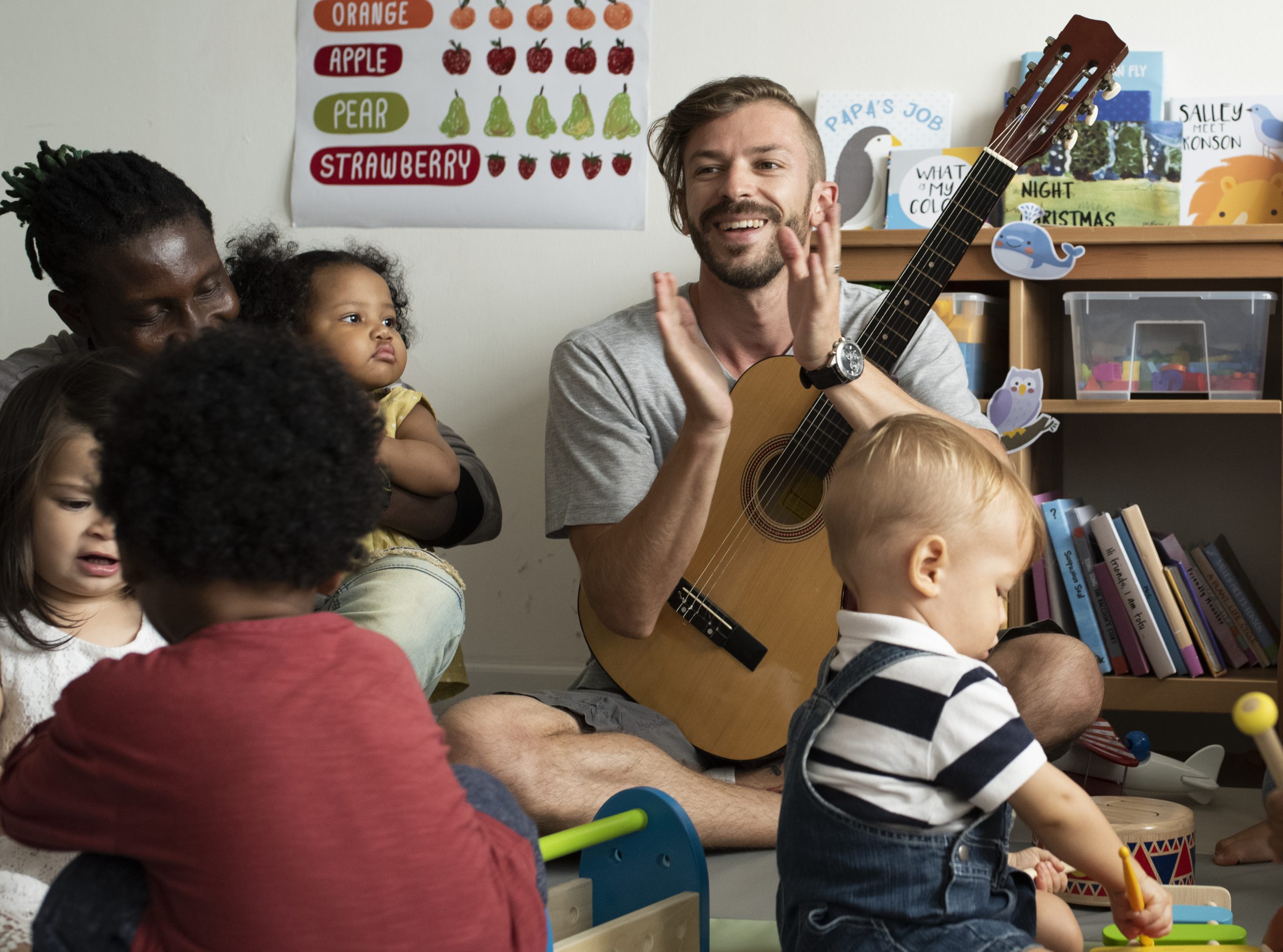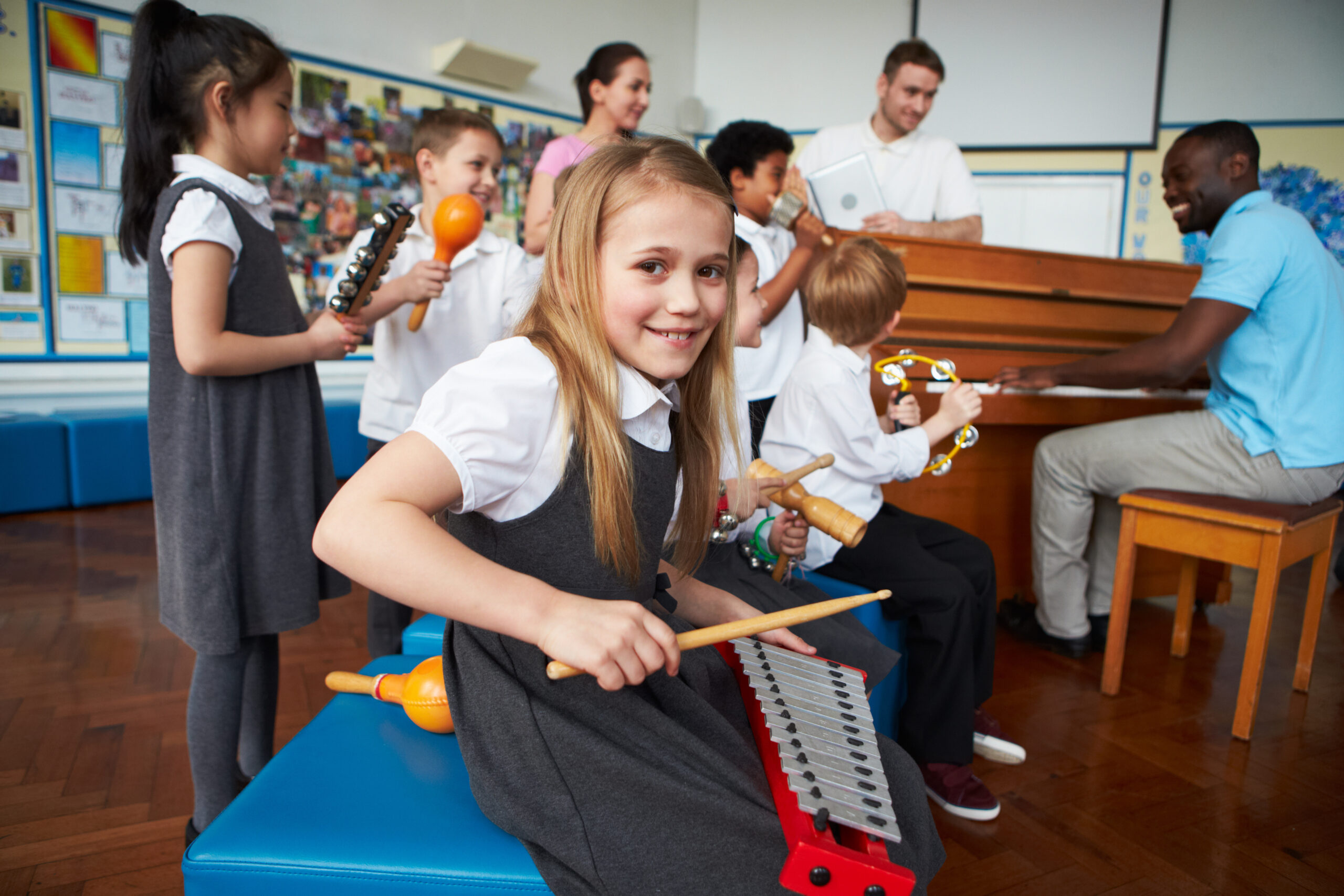
Careful actions in the classroom
How contradictory as it may seem: don’t think music at first. Your class group is initially a collection of indivuals. They all have different backgrounds, different aspirations and needs, weaknesses and strengths. There is no need to keep a computerized account, but it should be a genuine goal to have everyone join in to the best of their abilities. Music education is perhaps outside regular education, but that only makes the effort required more challenging. What you need is an anticipatory approach that tries to minimalize the error margin in which problems will inevitably occur. This can be achieved through:
- a safe pedagogical environment
- an effective class management
- a set of clear and consistent instructions
- a systematic and conscious follow-up of students’ progress
Any actions should bear in mind the following:
- Music education intended to contribute to overall development.
- Students are above all young people: immediate awareness of disturbing stress factors will enable you to jointly control any continuing issues.
- Your students’ individual competences and strengths are always an asset, although they can at first seem difficult to pinpoint.
- Realizing goals is process-related but first requires a clear mindset that puts forward those goals. It also enables us to identify obstacles.
- The classroom is a stage that requires careful stage management. A clear, basic set of rules and the willingness to adopt flexibility when needed is our best bet to take up differences in students’ needs.
- A learning environment should be engaging.
- Expectations should always be challenging on an individual level, but every student has her or his own level to be considered.
- Conduct is like super glue and frictions are part of the game; any cracks are usually easily mended, when positive conduct is encouraged, our bond is strengthened.
- understanding doesn’t need a tiresome set of rules: it’s all about the basics. Being explicit about them; is mainly about setting out clearly and inviting the students to join in. Explaining mutual benefits, is always a better bet than relying on a dead letter set of rules.
- Let’s not forget about a sound dose of autonomy. Especially in music education, wellbeing, personal musical development, and autonomy go hand in hand.
- Above all, a good learning environment is always a safe learning environment.
When we respond to one or more elements of the above list, we are building towards a greater goal. Nothing is more fulfilling than accomplishing inner growth and the feeling, as a teacher, of being able to contribute to that growth.
Did you find this resource useful?
Create an account to bookmark this article!
Read more about
Related articles
All posts- age
- ambition
- awareness
- chord symbol
- class practice
- classroom environment
- co-teaching
- collaboration
- composing
- context
- creativity
- cross-cultural
- cultural reflection
- customs and traditions
- developmental disabilities
- differentiation
- diversity
- exercise
- games
- gender
- genre
- group lesson
- improvisation
- individual lesson
- keyboard harmony
- language
- learning achievements
- learning disabilities
- learning environment
- life-long learning
- ludodidactics
- motivation
- music theory
- musical
- peers
- piano
- play
- playfulness
- poverty
- practical
- reflection
- remediation
- role play
- school organization
- self-study
- social context
- special needs
- stereotyping
- talent
- teacher
- teacher skills
- theoretical
- video
- wellbeing





